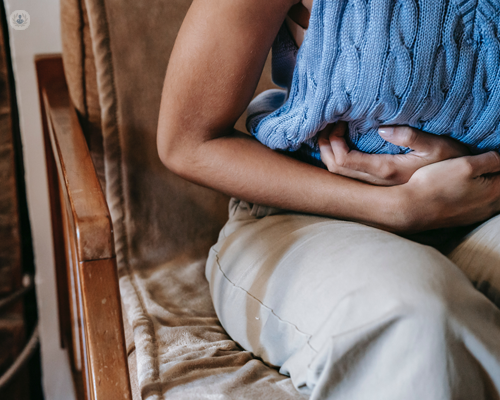The connection between adenomyosis and lower back pain
Written in association with:Adenomyosis is a common gynaecological condition characterised by the presence of endometrial tissue within the uterine wall.
While it is well-known for causing various symptoms such as pelvic pain and heavy menstrual bleeding, there is a growing body of evidence suggesting an association between adenomyosis and lower back pain in affected patients.
In this article, leading consultant gynaecologist Mr Mahantesh Karoshi explores potential mechanisms underlying this connection and discusses managing lower back pain in patients with adenomyosis.

What is the link between lower back pain and adenomyosis?
While lower back pain is not traditionally considered a hallmark symptom of adenomyosis, several studies have reported a significant association between the two.
Understanding the mechanisms behind this association is crucial for improving the quality of life for women with adenomyosis.
What are the potential mechanisms associated with adenomyosis and lower back pain?
Uterine inflammation
Adenomyosis is characterised by inflammation and an altered uterine microenvironment. This inflammatory milieu can lead to referred pain, including lower back pain. Inflammatory mediators may sensitise nearby nerves, resulting in heightened perception of pain.
Pelvic muscle tension
Chronic pelvic pain associated with adenomyosis may lead to pelvic muscle tension. Over time, this muscle tension can radiate to the lower back, causing discomfort and pain.
Altered uterine contractions
Adenomyosis can disrupt normal uterine contractions, leading to dysmenorrhea and pelvic pain. These abnormal contractions may also contribute to lower back pain, as the uterus and lower back share anatomical connections through ligaments and nerves.
Hormonal factors
Hormonal fluctuations in women with adenomyosis, particularly elevated oestrogen levels, may contribute to lower back pain. Oestrogen can influence pain perception and muscle tension, potentially exacerbating lower back discomfort.
How is adenomyosis and lower back pain diagnosed?
One challenge in studying the relationship between adenomyosis and lower back pain is the lack of a standardised diagnostic approach for adenomyosis. Many women with adenomyosis may go undiagnosed, making it difficult to establish a direct causal link between the condition and lower back pain.
Experiencing lower back pain and wondering if it’s connected to adenomyosis? Arrange a consultation with Mr Karoshi via his Top Doctors profile.


